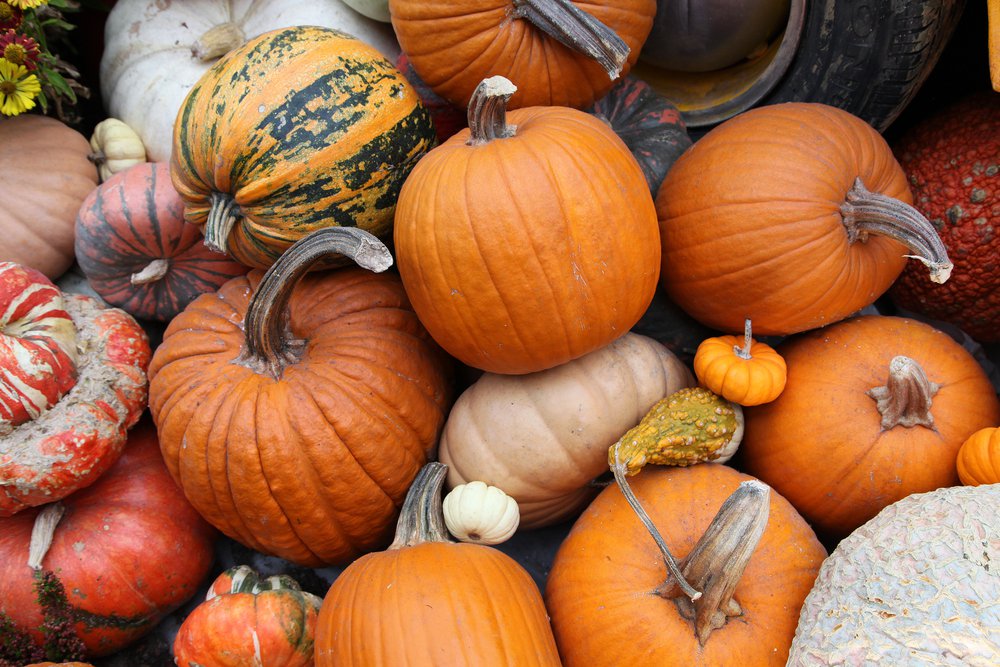Pumpkin flowers are large orange or yellow-colored blooms that grow on long vines and produce pumpkins! On the standard ready-for-fall growing schedule, these flowers begin to bloom mid-June to early July. Healthy vines produce flowers from this time until the first frost.
For successful pollination to produce pumpkins, female pumpkin flowers need to be pollinated by male flowers.The male flowers outnumber the male flowers 10:1 and typically start showing up about two weeks before a female shows up.
Growers may think their female flowers never opened, which can happen, but it is more likely the grower just missed it. Most female pumpkin flowers open for just one morning and close up by afternoon of the very same day. Each female can produce one pumpkin. It is easy to identify the soon-to-be pumpkins on female flowers right below the petals.
Pumpkins are actually fruits by definition. They are a variety of pepo fruit, or berry with a thick rind. Pumpkins come in every shape and size, ranging from just a couple ounces for some varieties to over 75 pounds for others. The over 40 types of pumpkin come in every shape and size imaginable.
Pumpkins originated in North America. Seeds of plants closely related to pumpkins have been found in Mexico dating back to 5500 BCE. The name pumpkin is derived from the Greek word “pepon,” meaning large melon.
Originally, the phrase “pumpkin patch” was only used to describe the area of a garden where pumpkins were planted and grown. For centuries, the word “patch” has been used to describe a plot of land. Modern use of the phrase includes farms or establishments, typically in rural areas, that stock a large amount of pumpkins in the fall. Nowadays, usually only some are grown on site and the rest are purchased and resold.
When looking to select the perfect pumpkin for yourself, opting to shop a pumpkin patch instead of a store will show you so many more choices. Walking up and down the rows of pumpkins until you find the “perfect one” can be so much more exciting than selecting one from a bin at the grocery store. Many pumpkin patches include other attractions like hayrides, corn mazes, and petting zoos.

Pumpkins are strictly warm weather crops. To grow pumpkins, seeds should be planted four months before the first frost, which is around May for most places. This is right on time to have pumpkins ready for prime pumpkin season, September-October.
Pumpkins require full sun to produce flowers, that is why pumpkin patches are very open and unobstructed by trees. The more sun the better! When seeds are planted too close together, leaves will shade other plants, reducing the number of flowers which directly reduces the number of pumpkins.
Pumpkins are a member of the Cucurbits family which includes cucumbers and squashes. The flowers as well as the fruits are edible. Pumpkin is an excellent source of potassium and vitamin A. They also contain minerals including magnesium and calcium, as well as vitamins E, C and B.
Pumpkin pie is a fall favorite dessert of many and is best served room temperature or cool with plenty of real whipped cream. It also can also be swapped for butternut squash in recipes and eaten warm. Creamy pumpkin soups are another delicious way to eat this fruit warm. Roasted pumpkin seeds can be seasoned and salted to make for a great snack.











Leave a comment